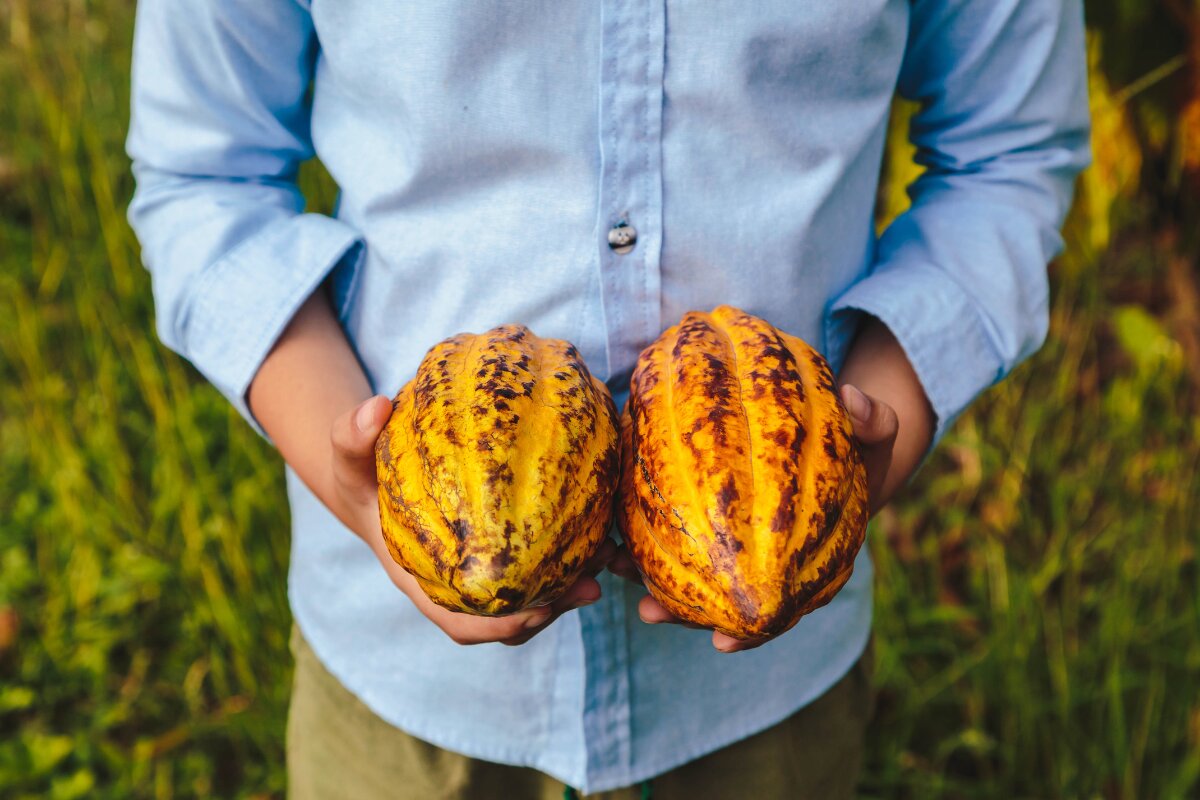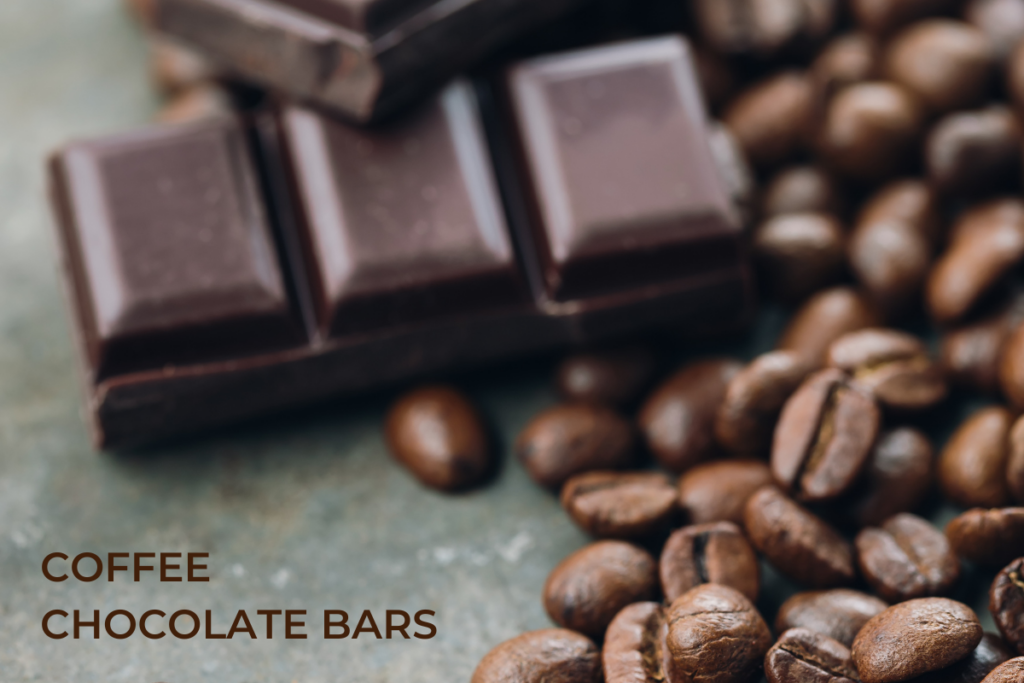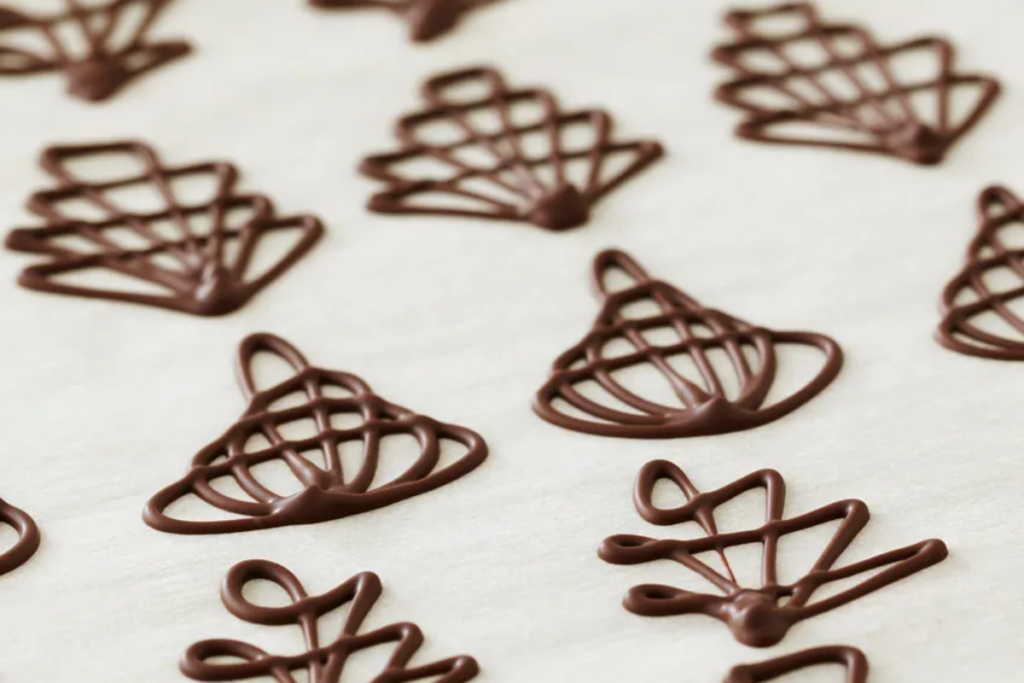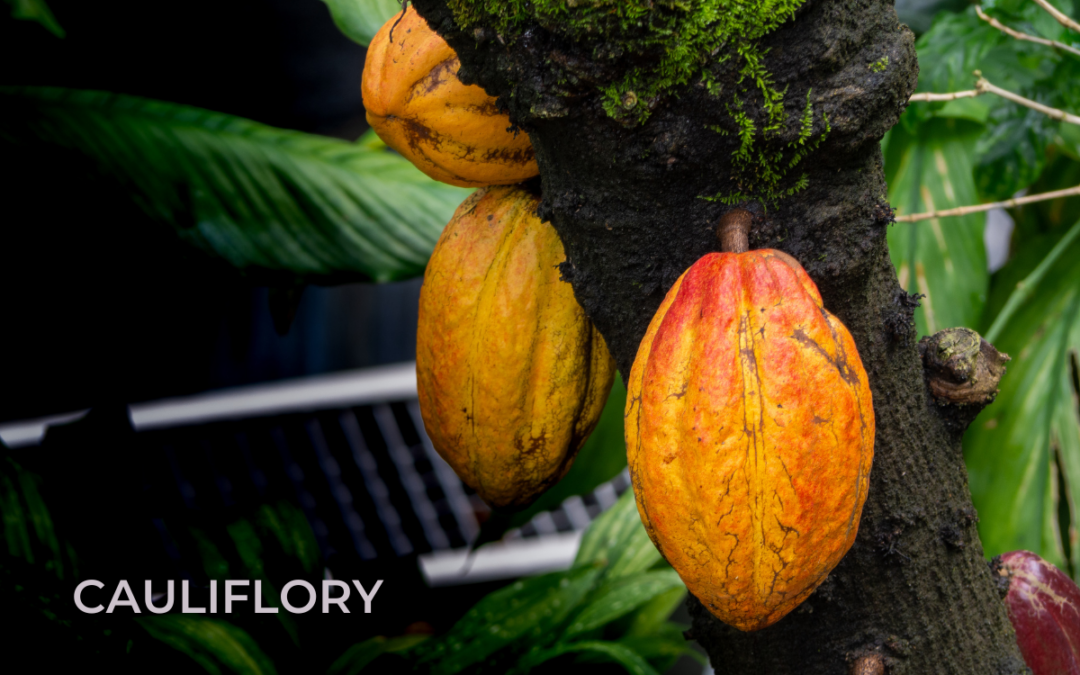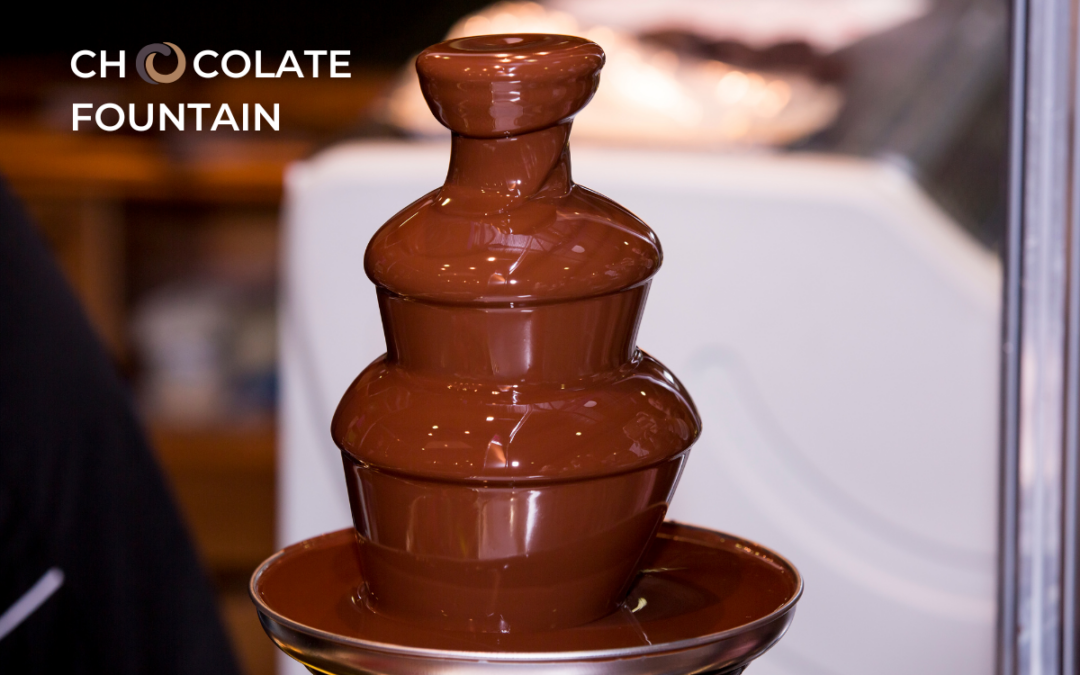The cacao tree is the heart and soul of all things chocolate. Its journey from tree to bar is long and fascinating. It begins with harvesting, an art as ancient as the cacao itself. In this blog, we’ll dive into the incredible process of cacao harvesting, to help you understand the secrets behind the creation of that perfect bar of chocolate.
Join us as we explore the world of chocolate from a pod grown on a cacao plantation to a bar in your very own hands!
Cacao harvesting
Cacao harvesting is an ancient art, handed down from generation to generation. The skilled harvesters wield machetes and have a deep understanding of cacao, making them perfect for venturing into the heart of cocoa plantations.
It all begins in the tropical regions near the equator, where cacao trees flourish. These trees produce colorful pods that house the precious cacao seeds (which we call cocoa beans), which are the essence of chocolate.
Cacao harvesting is about preserving traditions, sustaining livelihoods and protecting the environment. It carries cultural, economic and ecological importance and makes an important contribution to chocolate production.
How is cacao harvested?
To get the precious cocoa beans, farmers cut the pods from the trees and split them open to extract the wet beans inside. But harvesting is more than just plucking pods from trees; it’s about a careful process that involves cutting only the ripe pods with precision and care so that neither the trees nor the pods are damaged in any way.
Pods are all harvested by hand with a clean cut through the stalk to drop them from their perch. By pushing or pulling according to the position of the fruit, harvesters can make sure that they cut cleanly without damaging the trunk from which they grow. Since the flowers grow directly from the trunk of the tree, any damage to the bark will reduce flowering in future seasons.
But the key to success is knowing when to harvest the cacao pods. Harvesters choose only the ones that are ready for harvest, which are often a vibrant shade of yellow, orange, or red.
When is cacao harvested?
The cacao harvest typically occurs at specific times of the year, which can vary by region. In most cacao-growing areas, there is a primary or main harvest season. This season usually aligns with the dry season, which provides the best conditions for harvesting and drying the beans. In many areas, the main harvest takes place between October and March. Some cacao-producing countries have a second, smaller harvest known as the mid-crop or mid-harvest. This occurs during the wetter months, often from May to August. And there are some regions that have a continuous harvest throughout the season.
Cacao harvesting is a crucial step in the production of chocolate. The goal is to pick the cacao pods at the peak of ripeness so that only the best quality beans with the richest flavor are selected. To ensure this, harvesting and pod selection must be done at just the right time.
Cocoa harvesting – Step by step
Step 1: Selecting ripe pods
When choosing cacao pods for harvest, farmers look for those that are the right color and size. Ripe cacao pods can range from green to yellow, orange, or red, depending on the cacao variety. To learn more about cacao pods and their colors, check out our post called What cacao pod colors exist? Different cacao pods colors.
Step 2: Manual harvest
Cacao harvesting is performed by hand. The stem of each pod is cut with a sharp blade to remove it from the tree trunk. When harvesting, farmers are gentle so that neither the pods nor the trees are damaged in the process.
Step 3: Bean extraction
After harvest, the pods are all collected and then one-by-one they are cracked open to reveal the cacao beans inside. The cacao beans are extracted from their pods along with the sweet white pulp surrounding them. This pulp plays a crucial role in fermentation, as it kickstarts the development of chocolate flavors in the beans.
What is done with cocoa after harvesting?
The beans are placed in shallow containers or covered heaps, allowing nature to work its magic. Over the next few days, a delightful transformation takes place as the beans undergo a complex fermentation process.
Fermentation takes place in the tropical heat, where temperatures range from 113°F to 122°F (45°C to 50°C). The warmth encourages natural microorganisms (yeast and bacteria) to feast on the pulp sugars, converting them first into alcohol and then into acids, such as acetic and lactic acid. These acids break down the bitter compounds inside the beans and unleash the rich, fruity, and chocolatey notes that we adore.
We hope you enjoyed this article. For more great articles, check out the rest of our CocoTerra blog.
If you have any questions or comments, feel free to contact us through our social media channels. We are @cocoterra_co on Instagram and Pinterest and @cocoterraco on X (aka Twitter) and Facebook.

